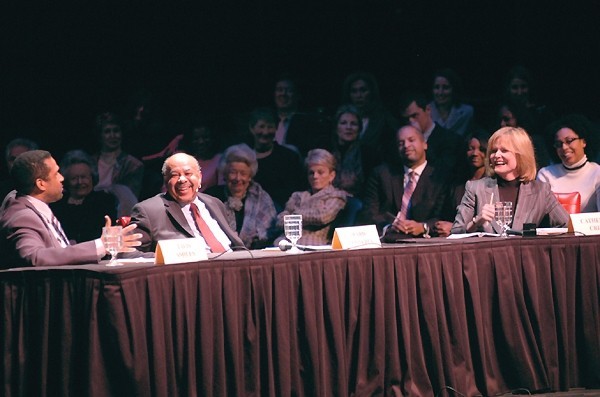
Is the playing field level?
The Willis M. Tate Distinguished Lecture Series continued Tuesday night with the Dan and Gail Cook Lecture, featuring Ward Connerly and Tavis Smiley.
Moderated by Catherine Crier, host of Court TV’s “Catherine Crier Live,” the debate centered on the issue of opportunity, specifically focusing on affirmative action.
Crier began the discussion with the question, “Is the playing field level?”
Ultimately, the panelists concluded that affirmative action should not be based solely on race. It should focus on people of low economic standing.
Connerly, founder and chairman of the American Civil Rights Institute, opened by comparing people to Baskin Robins ice cream saying we come in many different flavors.
Smiley, host of “The Tavis Smiley Show” on National Public Radio, responded: “I love ice cream, but this is not about black versus white. This is about wrong versus right.”
Affirmative action is a loaded topic, as demonstrated by last year’s infamous bake sale and the student debate that followed, but, according to Smiley, affirmative action is not about reparations for discrimination in the past, it is about the future. “Racism is alive and kicking,” he said. “There has to be a remedy, but we have to admit to its existence.”
Crier used a hypothetical example of a white, male student being discriminated against for having good grades.
Connerly said discrimination is a result of policy.
Smiley, gesturing slightly with his hands for emphasis, said there is no perfect public policy. “No one has a problem with a white kid succeeding,” he said.
Before Connerly could disagree, Smiley interrupted and said, “It’s about to get nasty up in here,” forecasting the heated debate to come.
However, all members of the panel agreed, the goal of affirmative action should be “the greatest good for the greatest number of people.”
The panelists agreed, as a common misconception, affirmative action is not about a point system or fulfilling quotas. It is, and should be, about qualifications.
Crier asked the two men if money should be invested in low-income areas, such as inner city schools and neighborhoods, rather than in areas with large minority populations.
“We have to look beyond race,” Connerly said. According to the 1964 Civil Rights Act, he continued, one of the goals was for the government to treat people as individuals, not as a group.
But, Smiley added, “How do we get beyond race without first considering race?”
The discussion continued centering on affirmation actions role in education.
Connerly and Smiley debated over the use of race as a sole factor in determining someone’s acceptance to a school or admittance to a company.
They agreed, there are other factors, such as being a legacy or coming from an affluent background, that can determine admission to a school or company.
Smiley said he hoped his work would benefit his kids some day. “They will get into Indiana, and they will start,” he joked.
But affirmative action is no laughing matter. “People of color are disadvantaged because of our history,” Smiley said.
Although he agreed, Connerly said admittance decisions could be based on anything, just not race. “Look at the totality of the individual. Look at the courses they took versus the courses available. Look at everything but race.”
Earlier in the debate, Connerly mentioned the idea of a colorblind society. Smiley, on the other hand, said there can be no colorblind society. What it really means, he explained, is, we have to “accept what we [as individuals] can bring to the table. We make up this beautiful mosaic that is America.”
In conclusion, Connerly said, in order to reach the goal of ultimate equality, we must “let people blend into each other [to form] one nation of invisible people.”








